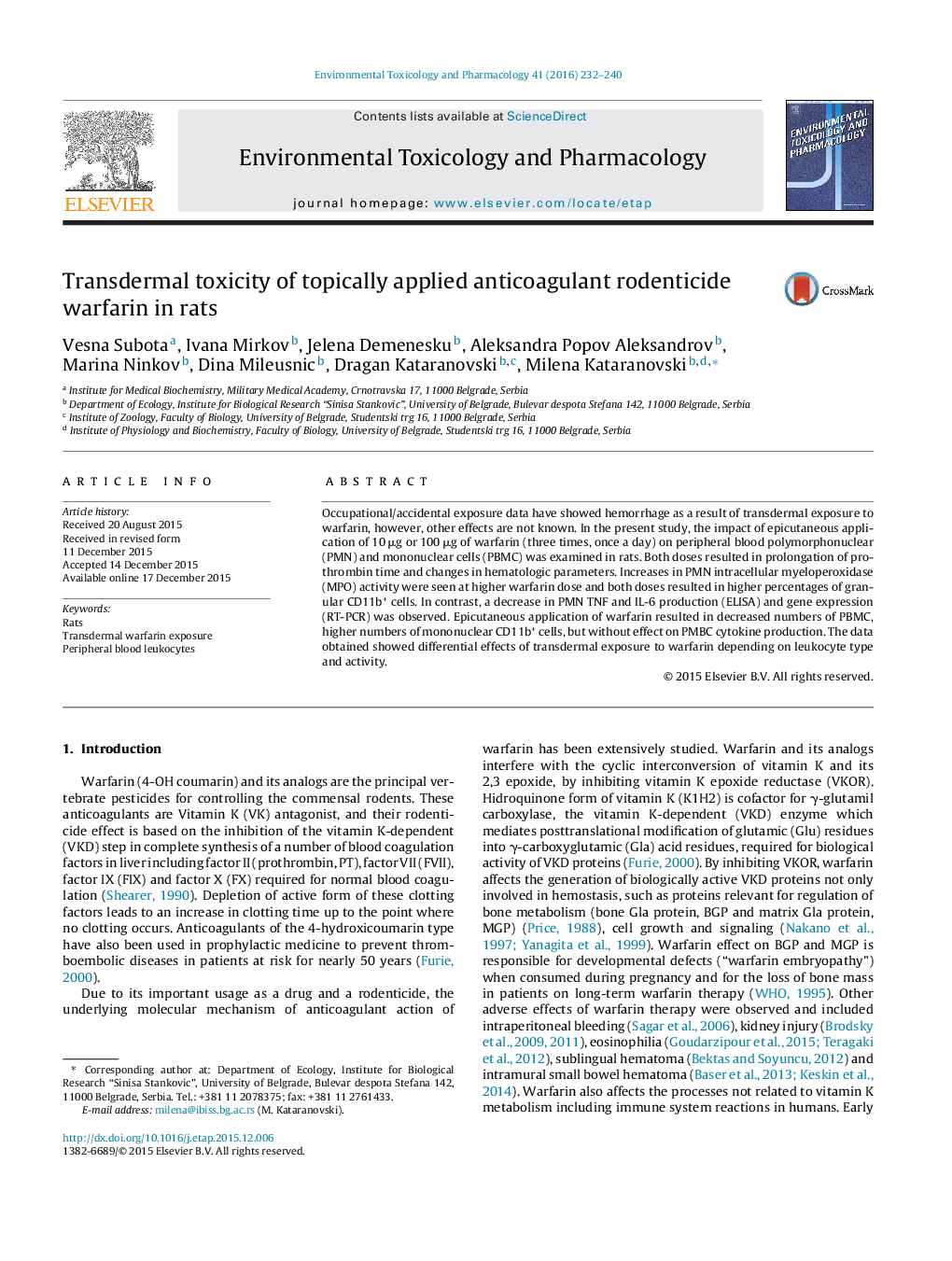| Article ID | Journal | Published Year | Pages | File Type |
|---|---|---|---|---|
| 2582886 | Environmental Toxicology and Pharmacology | 2016 | 9 Pages |
Abstract
Occupational/accidental exposure data have showed hemorrhage as a result of transdermal exposure to warfarin, however, other effects are not known. In the present study, the impact of epicutaneous application of 10 μg or 100 μg of warfarin (three times, once a day) on peripheral blood polymorphonuclear (PMN) and mononuclear cells (PBMC) was examined in rats. Both doses resulted in prolongation of prothrombin time and changes in hematologic parameters. Increases in PMN intracellular myeloperoxidase (MPO) activity were seen at higher warfarin dose and both doses resulted in higher percentages of granular CD11b+ cells. In contrast, a decrease in PMN TNF and IL-6 production (ELISA) and gene expression (RT-PCR) was observed. Epicutaneous application of warfarin resulted in decreased numbers of PBMC, higher numbers of mononuclear CD11b+ cells, but without effect on PMBC cytokine production. The data obtained showed differential effects of transdermal exposure to warfarin depending on leukocyte type and activity.
Keywords
Related Topics
Life Sciences
Environmental Science
Health, Toxicology and Mutagenesis
Authors
Vesna Subota, Ivana Mirkov, Jelena Demenesku, Aleksandra Popov Aleksandrov, Marina Ninkov, Dina Mileusnic, Dragan Kataranovski, Milena Kataranovski,
